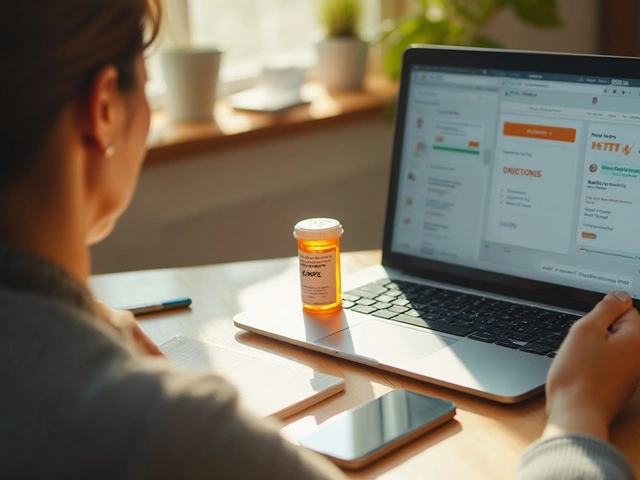Water Pill: What It Is, How It Works, and Buying Tips
If you’ve heard doctors mention a "water pill," they’re talking about a type of diuretic that helps your body get rid of extra fluid. The most common water pill is furosemide, but other drugs like hydrochlorothiazide and spironolactone fall in the same group. These meds are used when you have swelling, high blood pressure, or kidney problems that cause fluid buildup.
When you take a water pill, it tells your kidneys to let more sodium and water out in the urine. Less fluid in your bloodstream means lower pressure on your heart and less swelling in your legs or lungs. That’s why doctors prescribe them after heart surgery, for heart failure, or when edema becomes a problem.
How Water Pills Work and Common Uses
Think of your kidneys as a filter that decides what stays in your blood and what goes out. A water pill opens the filter wider for salt and water, so more of both leave your body. This results in a quick drop in weight (often a few pounds) as the excess fluid disappears.
Typical situations where a water pill is useful include:
- High blood pressure that doesn’t respond to other meds.
- Edema caused by heart failure, liver disease, or kidney disease.
- Preventing fluid buildup after certain surgeries.
Doctors usually start with a low dose and adjust based on how you feel and lab results. It’s important to take it exactly as prescribed because taking too much can lead to dehydration or low potassium.
Safety, Side Effects, and Buying Online Safely
Like any medication, water pills have side effects. The most common ones are increased urination, dizziness, and low potassium (which can cause muscle cramps). Some people also get a mild rise in blood sugar or a feeling of being light‑headed.
To keep side effects in check, drink enough water, eat potassium‑rich foods (like bananas or oranges), and have your blood tested regularly. If you feel faint, numbness, or a rapid heartbeat, call your doctor right away.
Buying a water pill online can be convenient, but you need to be careful. Look for a pharmacy that requires a prescription, shows a physical address, and has clear contact information. Check that the site is certified by a recognized pharmacy board or displays a verified seal.
Before you order, compare prices, read the pharmacy’s return policy, and make sure the medication is listed with its generic name (usually furosemide). Avoid any site that offers the drug without a prescription or sells it at a price that seems too good to be true – that’s often a red flag for counterfeit pills.
Once your order arrives, inspect the packaging. The label should match the drug name, strength, and your doctor’s instructions. If anything looks off, don’t use the pill and contact the pharmacy for a replacement.
In short, a water pill can be a lifesaver when fluid overload is a problem, but it works best when you understand how it works, watch for side effects, and get it from a trusted source. Keep these tips handy, and you’ll use your water pill safely and effectively.
Lasix, also known as furosemide, is a commonly prescribed diuretic used for treating fluid retention and high blood pressure. This article explains how Lasix works, its impact on the body, why it’s so popular (and sometimes misused), and what you really need to watch out for when taking it. If you’re curious about side effects or want tips on safer use, you’ll find plenty of real-world insights here. Learn what really makes Lasix tick and how to navigate its benefits and pitfalls like a pro.
Continue reading





